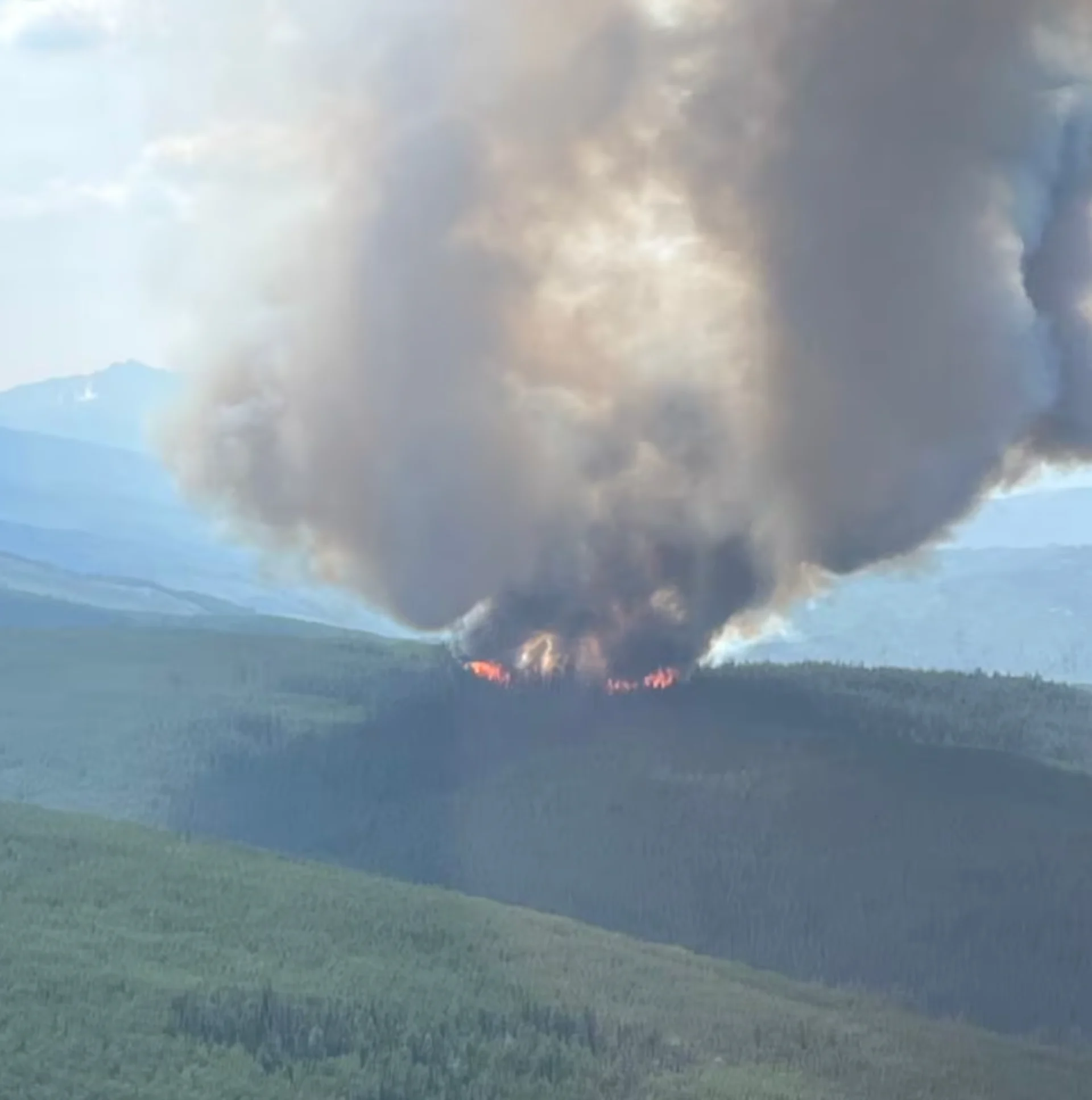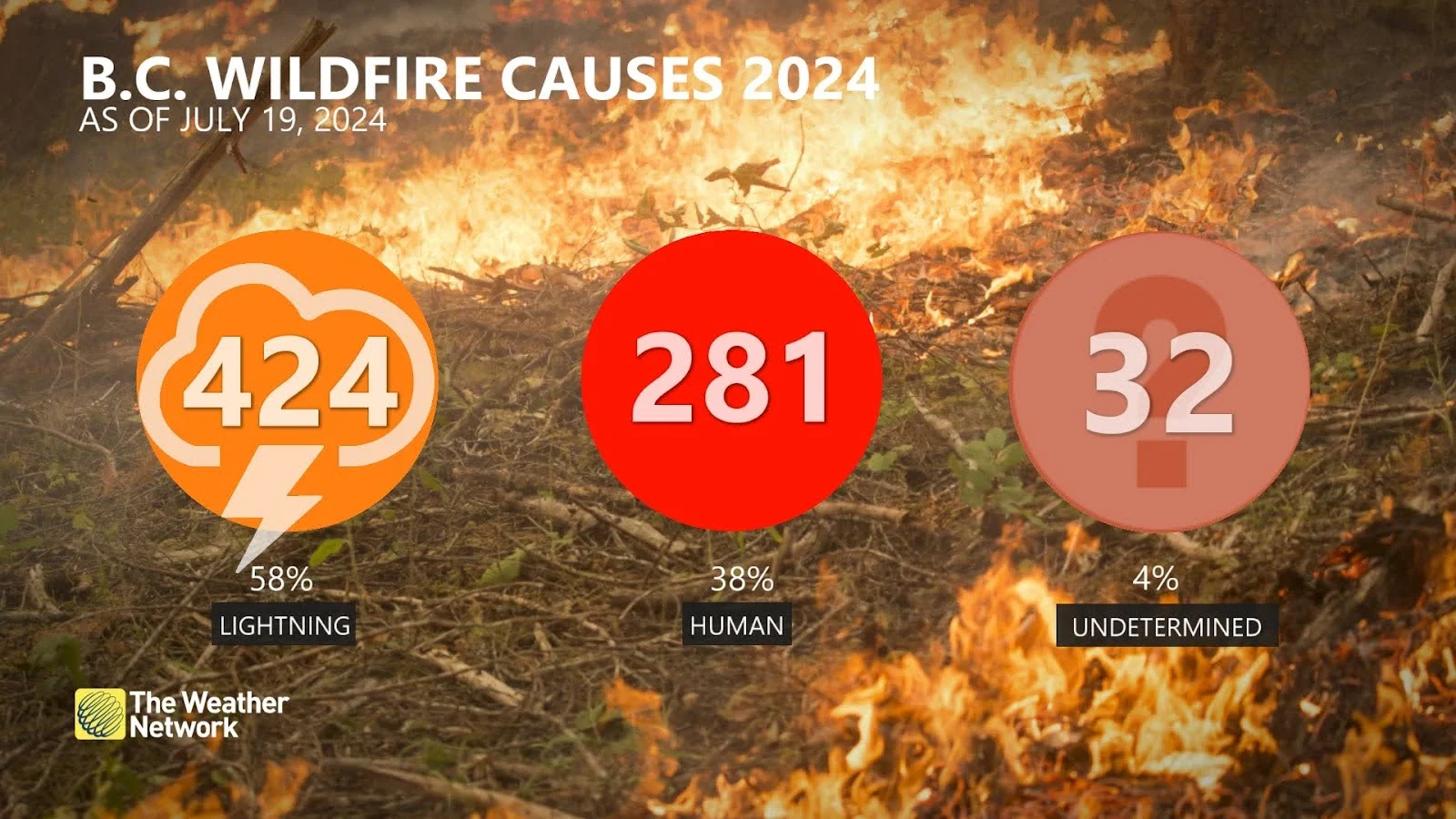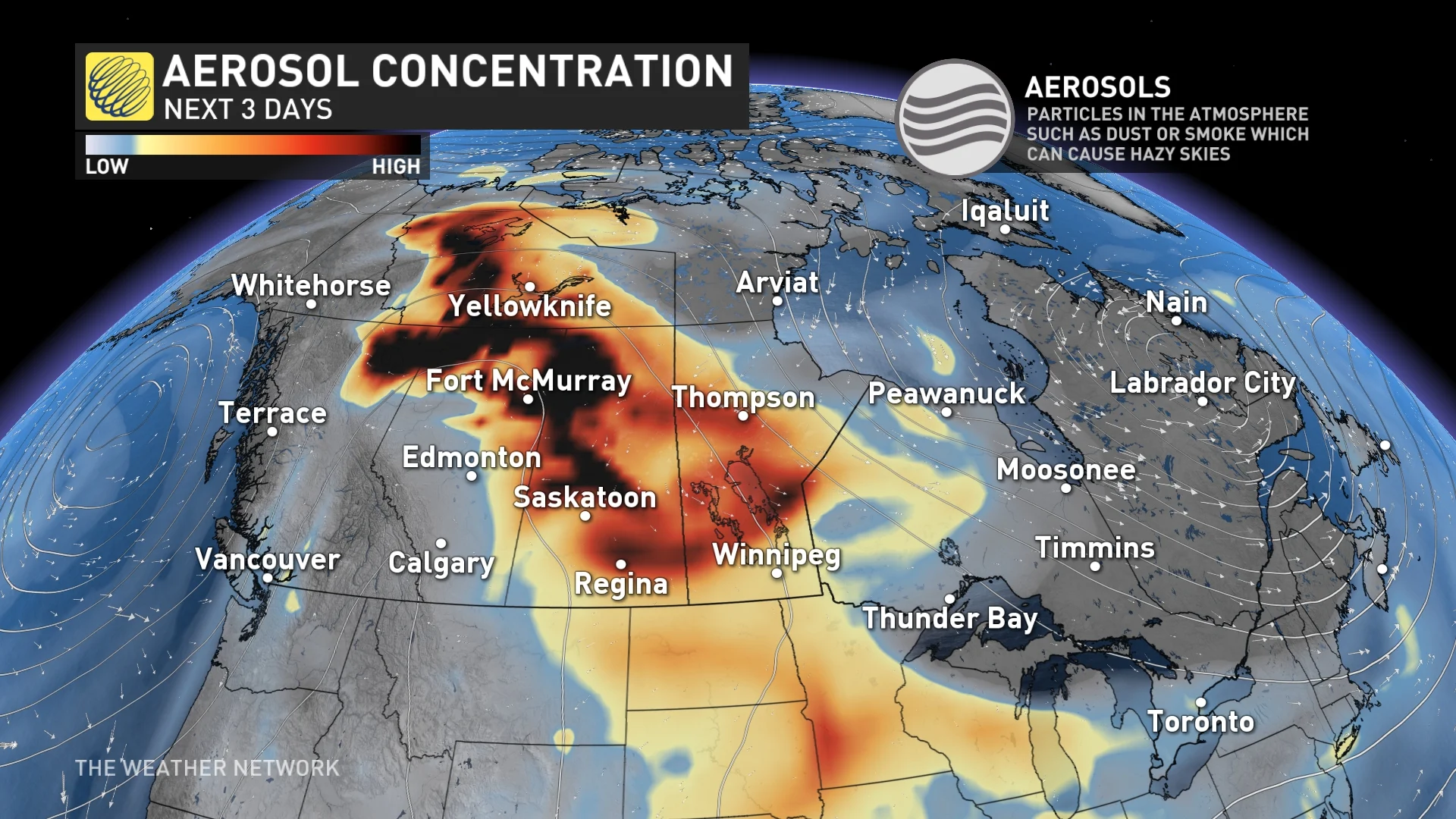
Wildfires rage across Western Canada, smoke pollution sweeps into Ontario, U.S.
Lightning and dry conditions have already caused many new wildfires to ignite in B.C. and Alberta, and things are expected to deteriorate in the coming days
Conditions are worsening for wildfires across Western Canada, with the threat to rapidly grow, and spark new fires over the coming days. The combination of an extended heat wave, extremely dry conditions, as well as dry lightning without rain, have all caused many new fires to ignite this week. This not only impacts the affected wildfire regions, but also brings the risk of poor air quality with smoke that can travel across parts of Canada and even into the U.S.
According to B.C. fire officials in a CBC News report, crews are gearing up for what they warn could be a "very challenging 72 hours" ahead.
SEE ALSO: Evacuations ordered as B.C. wildfires grow
In the last 24 hours, 88 new fires started in British Columbia, mostly from lightning in the southeast.

Several communities in the province's Interior are under evacuation orders or alerts due to the out-of-control wildfires. As of early Saturday morning, there were more than 320 active wildfires burning throughout the province.
The fire danger ratings across much of Western Canada, including B.C., Alberta, Saskatchewan, and parts of the Northwest Territories, are sitting at 'high' or 'extreme.'
Deteriorating conditions at Shetland Creek wildfire in Ashcroft, B.C.
The extremely hot and dry conditions are expected to persist over the next seven days, at least, with the ongoing fires expected to grow and expand at a greater rate. New wildfires can start much more easily, as well, especially amid the prolonged and dangerous heat wave.

With the fires, comes the wildfire smoke, which is currently in abundance from southern B.C. to the northern Prairies. The smoke is expected to expand to the southern Prairies over the weekend.
The smoke will also move into the northern U.S., and east into southern Ontario and Quebec, potentially impacting air quality for several communities.

There have already been reports of several days with poor air quality south of the border, including in states like Minnesota and North Dakota.
Smoke from distant fires typically remains higher in the atmosphere, though low pressure systems can help to drag it down to ground level. The further away from the wildfires, the less impact the smoke will have on air quality.
CANADA'S WILDFIRES: Visit The Weather Network's wildfire hub to keep up with the latest on the active start to wildfire season across Canada.
According to Health Canada, wildfire smoke can cause everything from a runny nose and sore throat, to severe chest pain and cough. It can also worsen lung and heart conditions, and it puts kids and infants, seniors, pregnant women and the immunocompromised at increased risk of negative effects.
If wildfire smoke is lingering in the skies around you, there are several ways you can protect yourself from the haze when the air quality in your area worsens. These include:
Keeping windows and doors closed, limit use of kitchen and bathroom fans
Install a high-efficiency filter into your HVAC system
Adapt your home’s ducting to accommodate a larger high-efficiency filter
Use your HVAC system's recirculation mode, and run it at higher speeds and for longer periods of time
Use a HEPA-rated portable air purifier











